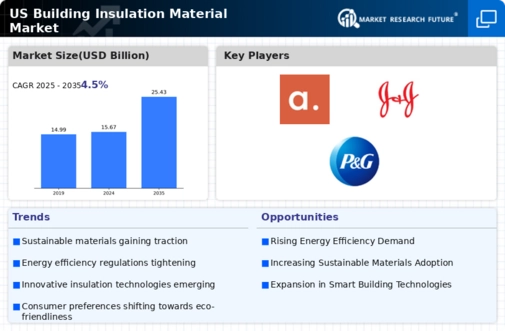The US Building Insulation Material Market is characterized by a diverse landscape of competitors, each vying for market share through a combination of innovative strategies, product offerings, and operational efficiencies. As the demand for energy-efficient and sustainable construction materials increases, companies are focusing on enhancing their product portfolios to cater to environmentally conscious consumers and regulatory standards. The competitive dynamics in this market are shaped by technological advancements, significant investments in research and development, and strategic partnerships that allow companies to maintain a competitive edge.
Various market players differentiate themselves through pricing strategies, distribution channels, and customer service while also navigating the challenges posed by fluctuating raw material costs and changing consumer preferences. Rockwool stands as a prominent player in the US Building Insulation Material Market, recognized for its high-quality stone wool insulation products that provide excellent thermal and acoustic performance. The company's robust market presence is bolstered by its commitment to sustainability and energy efficiency, appealing to both residential and commercial developers.
Rockwool's strengths lie in its continuous innovation, with a focus on developing solutions that not only meet but exceed industry standards for safety and environmental impact. Additionally, the company's extensive distribution network and strong relationships with contractors and builders enable it to effectively reach a wide customer base, solidifying its position in an increasingly competitive market. SaintGobain is another key contender within the US Building Insulation Material Market, offering a range of products, including fiberglass insulation, foam board insulation, and other energy-saving solutions for various applications.
The company leverages its extensive experience and technological expertise to deliver innovative insulation solutions that cater to the needs of energy efficiency and sustainability. SaintGobain's strengths can be attributed to its well-established brand reputation and commitment to research and development, which has led to advanced product offerings. The company's strategic mergers and acquisitions over the years have further enhanced its market presence, allowing it to broaden its portfolio and strengthen its competitive position in the US. Additionally, SaintGobain actively promotes sustainability initiatives, which resonate well with environmentally aware consumers and align with current regulatory requirements in the building industry.
This focus on innovation, coupled with strong market relationships, positions SaintGobain as a formidable player in the US insulation sector.














Leave a Comment